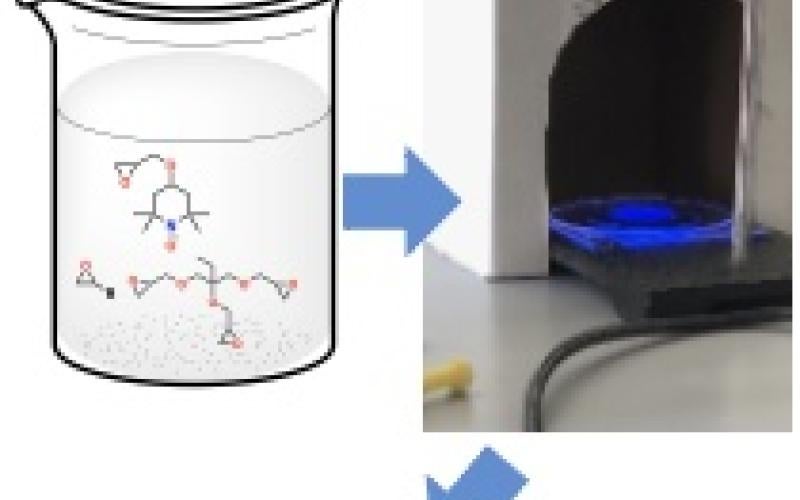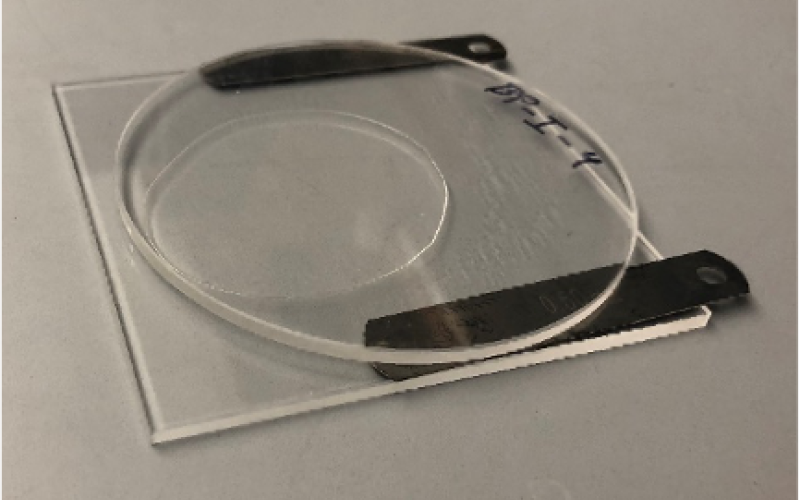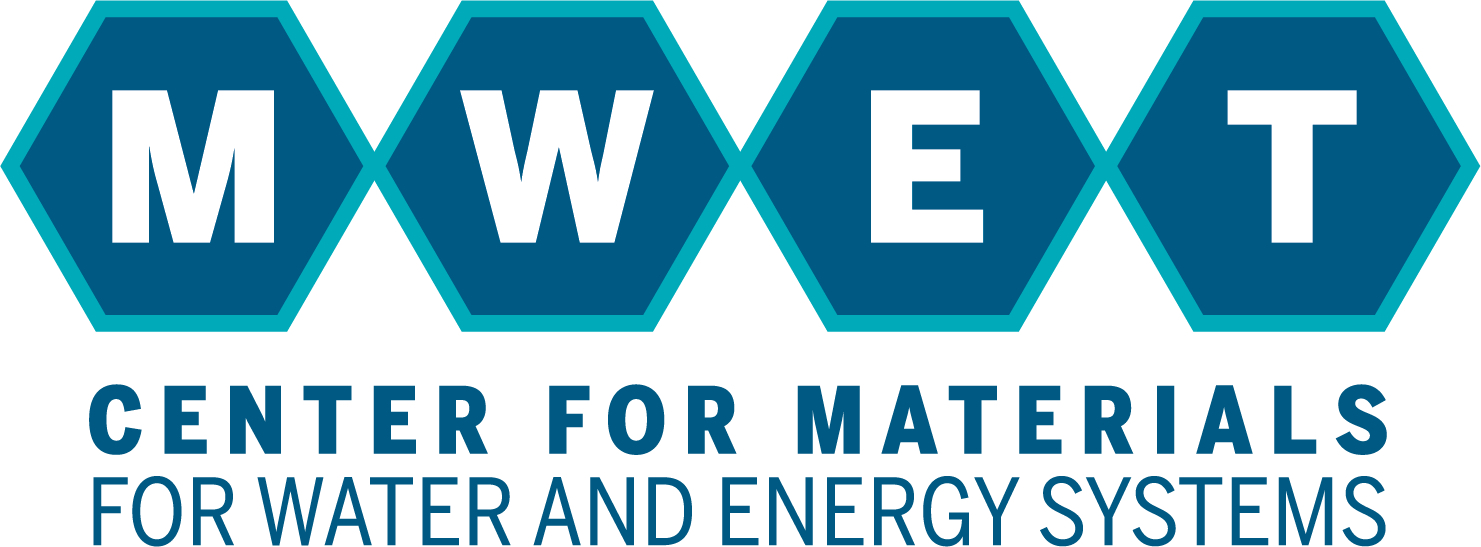
Scientific Achievement
Cross-linked polyether networks of varying hydrophilicity have been synthesized using photo-induced cationic polymerizations and will be used to determine how polyether composition can influence water dynamics.

Significance and Impact
Understanding the fundamentals of polymer/water interactions will help guide the rational design of polyether-incorporated membranes.
Research Details
- Thin films with varying hydrophilicity will be cast and characterized with broadband dielectric spectroscopy to determine the polarity of the polymer networks.
- Polymers will then be sent to UCSB for electron paramagnetic resonance spectroscopy to determine how the relative hydrophilicity of the polymers affects water dynamics.
- Because this type of polymerization is frontal, this technique can be used in the future to make films with compositionally-controlled layers.
The macromolecular constructs forming the basis for the UMPC make use of a multifunctional polyether surface functionality that is proposed to provide significant versatility in surface characteristics, and also surface functionality that is addressable to specific interactants identified in GAP 2. Photopolymer coatings may be created to exert broad compositional control over physiochemical properties. Smooth photopolymer coatings may be polymerized in minutes using epoxide monomers, photoacid generator, and sensitizer to accelerate the polymerization.
The photopolymerization may be conducted on a spin-coater under UV irradiation resulting in fully cured films in seconds. The adsorption of inorganic salts, soluble and emulsified hydrocarbons, and natural organic matter (NOM) may be systematically investigated as surface characteristics are altered with film composition as shown above. The compositional control over structure-property relationships will be used to isolate and investigate the effects of surface energy, diffusion coefficient, dielectric constant, and activity coefficients for specific solutes.
Insights gained in GAP 1 using this versatile platform will be combined with specific interactants discovered in GAP 2 and leveraged in the proposed materials platform in GAP 3 to create integrated mesostructured membranes for water purification.
This work was performed at The University of Texas at Austin.

